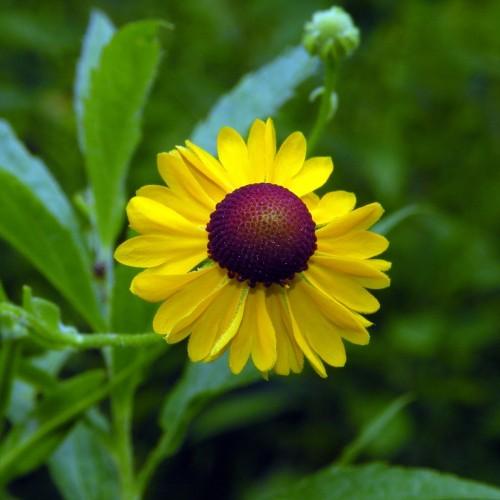
purple-headed sneezeweed
Helenium flexuosum
Cycle:
Herbaceous Perennial
Watering:
Average
Hardiness Zone:
5 - 9
Flowers:
Flowers
Sun:
full sun,part sun/part shade
Leaf:
Yes
Growth Rate:
Low
Maintenance:
Moderate
Drought Tolerant:
Yes
Salt Tolerant:
Yes
Invasive:
Yes
watering
Purple-headed sneezeweed is a native North American wildflower that thrives best in sunny conditions. It requires regular water, but should not be over-watered or allowed to stand in water. It's best to water it once a week, giving it a deep, thorough watering. Generally, 1 inch of water per week is sufficient, but check the soil moisture every few days.
sunlight
Purple-headed sneezeweed prefers full sun, so ideally it should receive at least 6-8 hours of direct sunlight throughout the day. It should not, however, be placed in midday sun, as this can often be too intense and damaging to the leaves. During the summer months, when the sun is more intense, try to place the plant in part shade in the part of the afternoon when the sun is at its highest intensity.
pruning
Purple-headed sneezeweed should be pruned in late winter or early spring before new growth appears. Pruning the plant helps to keep the plant vigorous and helps ensure even growth in the next season. Prune the plant by snipping off the longest, oldest stems at their base, as these are not as productive. You can prune up to 1-third of the plant, leaving the remaining stems for spring regrowth and flower production. Make sure to use sterile pruning tools to avoid transferring any diseases to the plant.
